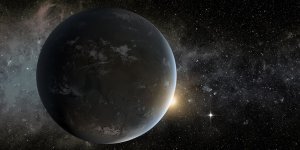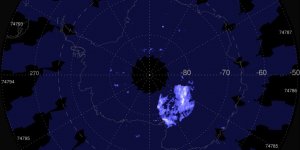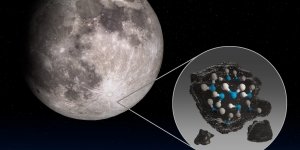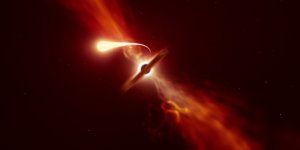Space

Scientists have discovered a huge 'super Earth' planet near one of the oldest stars in the galaxy. »

Summer in Antarctica is marked by days in which the Sun never sets, balmy temperatures that hover as high as freezing, and electric-blue clouds of ice. »

The galaxy GN-z11 might not have a flashy name, but it appears to be the most distant and oldest galaxy ever detected, scientists have found. »

Twenty-five years ago, NASA sent history's first probe into the atmosphere of the solar system's largest planet. But the information returned by the Galileo probe during its descent into Jupiter caused head-scratching: The atmosphere it was plunging into was much denser and hotter than scientists expected. »

Advanced optics capture structures as small as 20 kilometers on the surface of the sun. »

Astronomers using data from the ongoing VLA Sky Survey have found distant galaxies with supermassive black holes at their cores that have launched powerful, radio-emitting jets of material within the past two decades or so. »

Another galaxy was absorbed into our own after colliding with the Milky Way some 10 billion years ago, astronomers have revealed. »

The instrument platform of the 305-meter telescope at Arecibo Observatory in Puerto Rico fell at approximately 7:55 a.m. Atlantic Standard Time Dec. 1. »

An international team of astronomers, led by the University of Cambridge, announced the most detailed ever catalogue of the stars in a huge swathe of our Milky Way galaxy. »

Io is the most volcanically active moon in our solar system. »

New lab experiments re-create the environment of Europa and find that the icy moon shines, even on its nightside. The effect is more than just a cool visual. »

Planets orbiting close to the most abundant and longest-lasting stars in our Milky Way may be less hospitable to life than previously thought. »

NASA’s Stratospheric Observatory for Infrared Astronomy (SOFIA) has confirmed, for the first time, water on the sunlit surface of the Moon. »

Two days after touching down on asteroid Bennu, NASA’s OSIRIS-REx mission team received on Thursday, Oct. 22, images that confirm the spacecraft has collected more than enough material to meet one of its main mission requirements – acquiring at least 2 ounces (60 grams) of the asteroid’s surface material. »

Astronomers have spotted a rare blast of light from a star being ripped apart by a supermassive black hole. »

In a new study, scientists looked at sunspots at low resolution as if they were trillions of miles away. »

Sometime between March 2010 and May 2012, a meteor streaked across the Martian sky and broke into pieces, slamming into the planet's surface. »

New research has found more evidence of a salty lake under the surface of Mars' southern ice cap, and also revealed a number of smaller salty "ponds" nearby -- raising the possibility there may be life on the Red Planet. »

An international team of astronomers has discovered a new class of planet, an ‘ultrahot Neptune’, orbiting the nearby star LTT 9779. »

The violent events leading up to the death of a star would likely drive away any planets. The newly discovered Jupiter-size object may have arrived long after the star died. »

Global populations of mammals, birds, amphibians, reptiles and fish have declined by over two-thirds in less than half a century, due in large part to the same environmental destruction that is contributing to the emergence of zoonotic diseases like COVID-19, according to a World Wide Fund for Nature. »

Researchers have used a combination of AI and quantum mechanics to reveal how hydrogen gradually turns into a metal in giant planets. »

While our Moon is airless, research indicates the presence of hematite, a form of rust that normally requires oxygen and water. »

Galaxy is distorted, appearing as a ring of light in the sky. »

A small but evolving dent in Earth’s magnetic field can cause big headaches for satellites. »

Observations by NASA's Hubble Space Telescope are showing that (...) »

New results from NASA's Juno mission at Jupiter suggest our solar system's largest planet is home to what's called "shallow lightning." »

NASA's Mars 2020 Perseverance rover lifts off from Cape Canaveral on July 30, 2020. »

The rediscovery of a lost planet could pave the way for the detection (...) »

Various teams of astronomers studied the mysterious massive star, located in (...) »

The newly discovered planet's parent star is still encircled by the disk of material from which both objects formed, giving scientists a glimpse at early planet evolution. »

Jupiter-size planets orbiting close to their stars have upended ideas about how giant planets form. »

Astronomical radio observatory Very Large Array locates hidden 'hot corino'. »

Taken with the infrared camera on NASA's Odyssey orbiter, the images reveal temperature variations aboard the small moon as it drifts into and out of Mars' shadow. »

Just as our own Moon floats away from Earth a tiny bit more each year, other moons are doing the same with their host planets. »